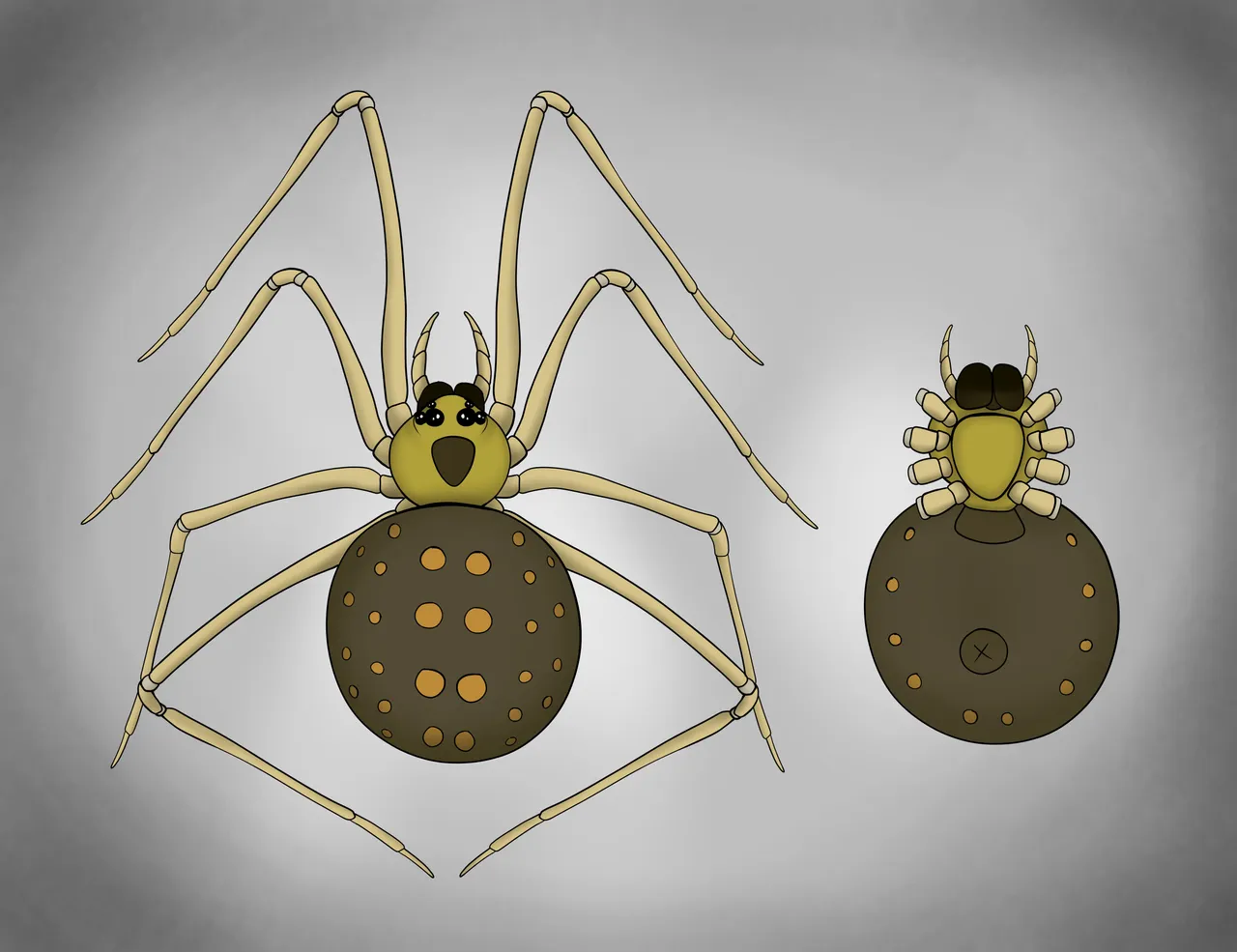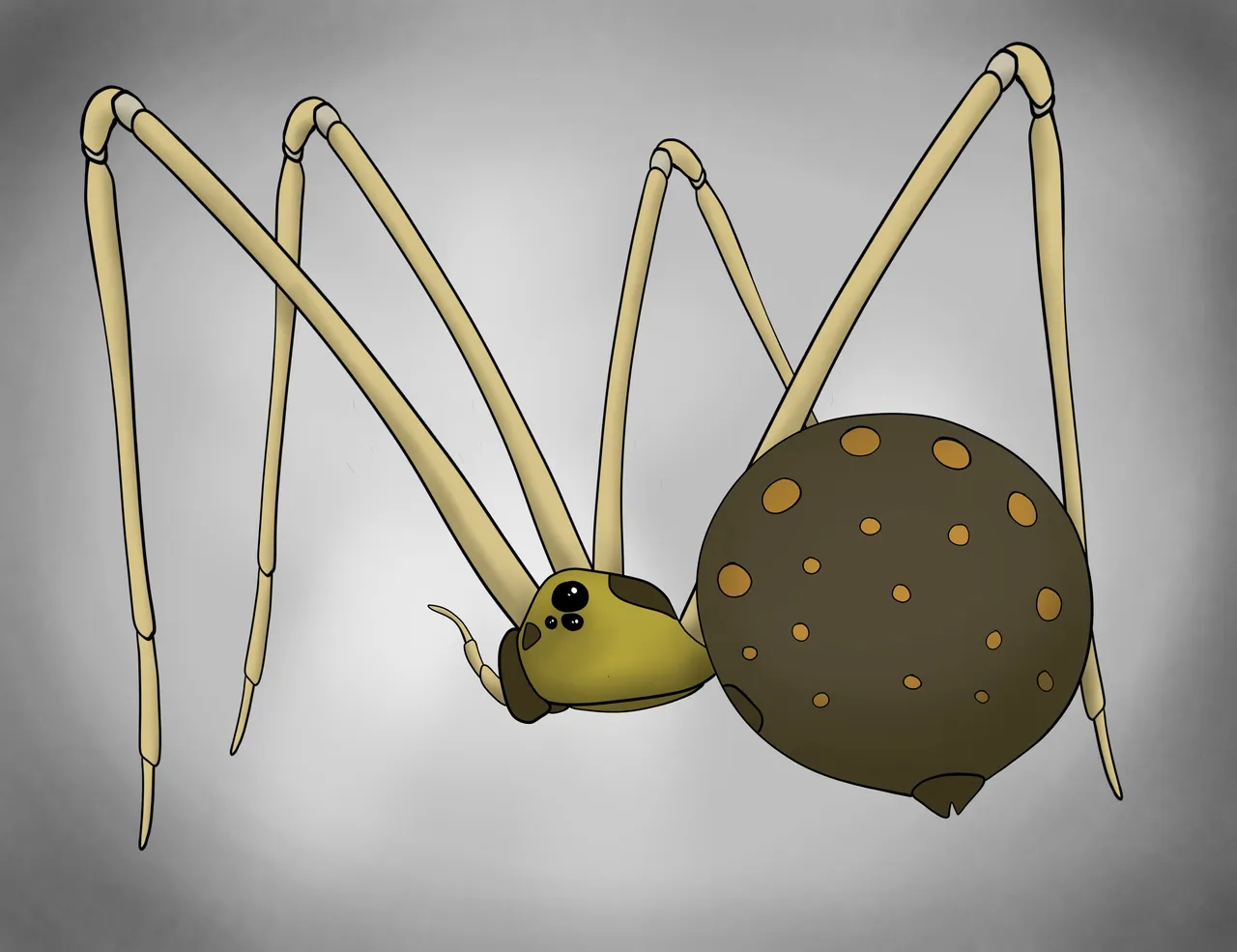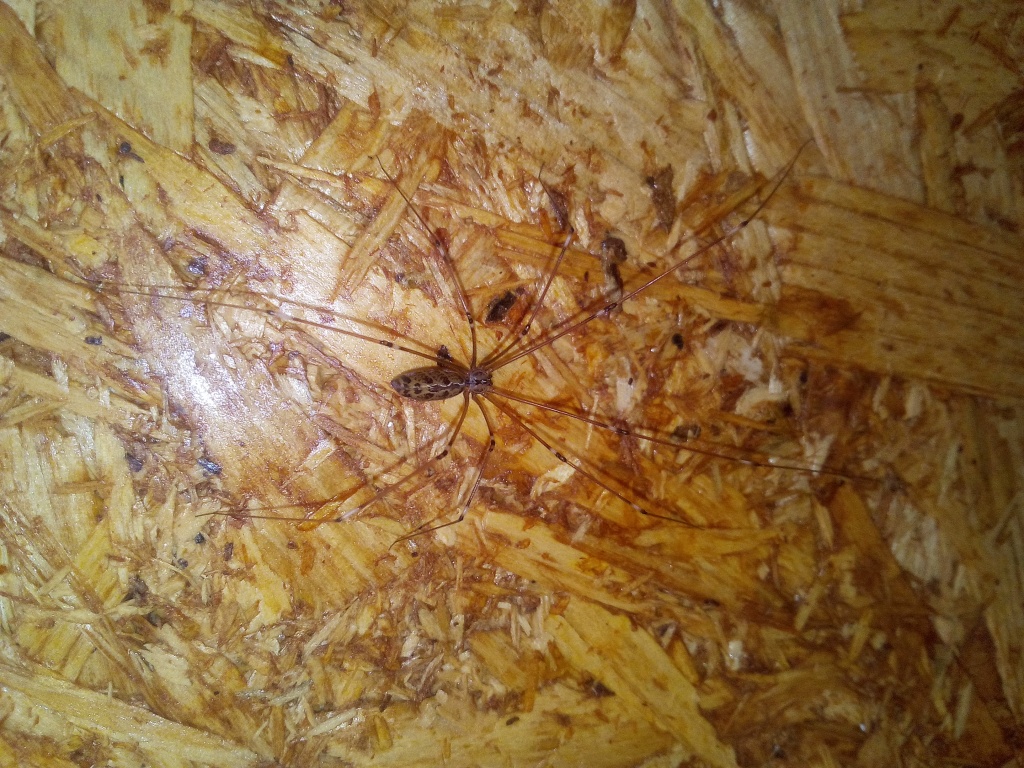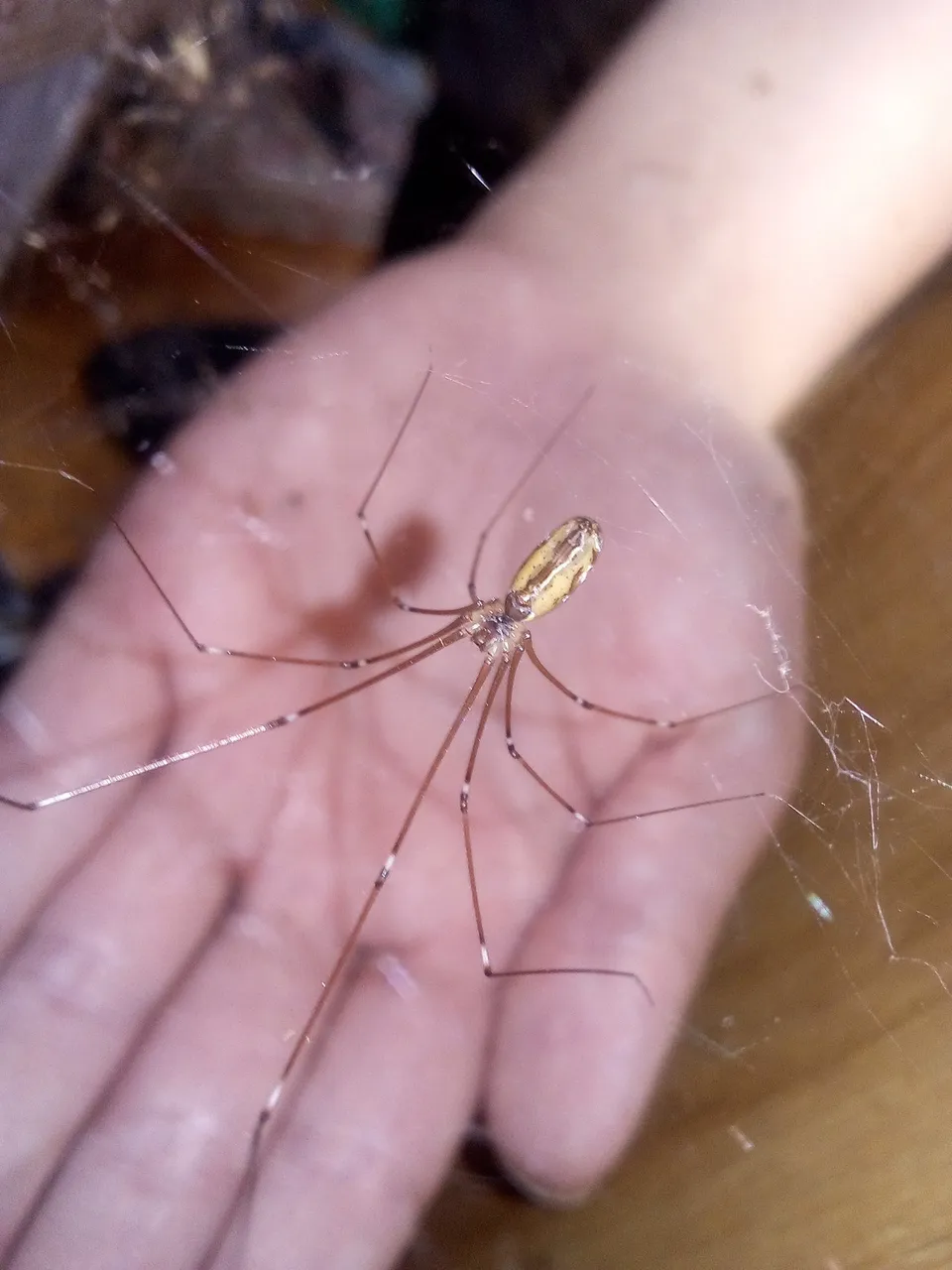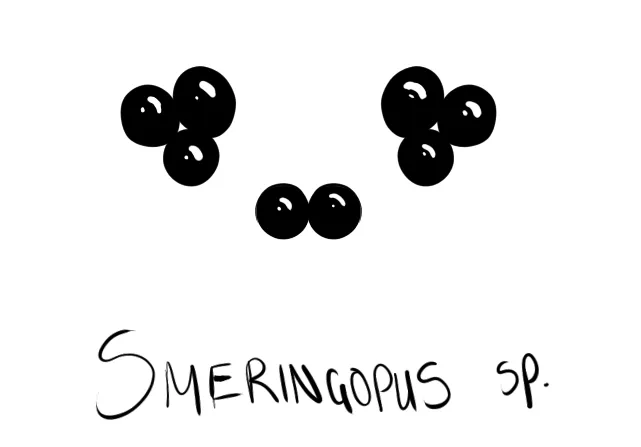Taxon:
- Class: Arachnida
- Order: Araneae
- Infra-Order: Araneamorph (true spiders)
- Family: Pholcidae
- Genus: Quamtana
- Species: Q. lotzi
Female
Around 1mm in body length. Leg span of approximately 15mm diagonally.
Cephalothorax:
Carapace yellowish with darkened fovea. Ocular region raised, 2 eye groupings of 3 eyes each anterior centre with large space between. Dark patch on clypeus under each eye group. Sternum shield shape, plain, yellowish. Mouth region black. Chelicera black. Pedipalps small, yellowish.
Abdomen:
Abdomen round, greyish brown, with yellowish orange spots, ventral plain. Spinnerets taper to point far beneath, middle of profile, pointing straight down.
Legs:
Yellow, plain, thin and long. 1, 4, 2, 3.
Male
Unknown.
ABOUT THE GENUS
These tiny spiders are commonly known as spotted cellar / daddy-long-legs spiders and they are indigenous to Africa with 26 described species, most from South Africa. They average 1mm in body length with variations on abdominal markings and shape. Some species have eight eyes while others have six. Q. lotzi is one of those with only six eyes in two groupings. They live in or around shrubs and bushes and sometimes in leaf litter and under rocks as often seen in the semi-desert environment of Orania.

